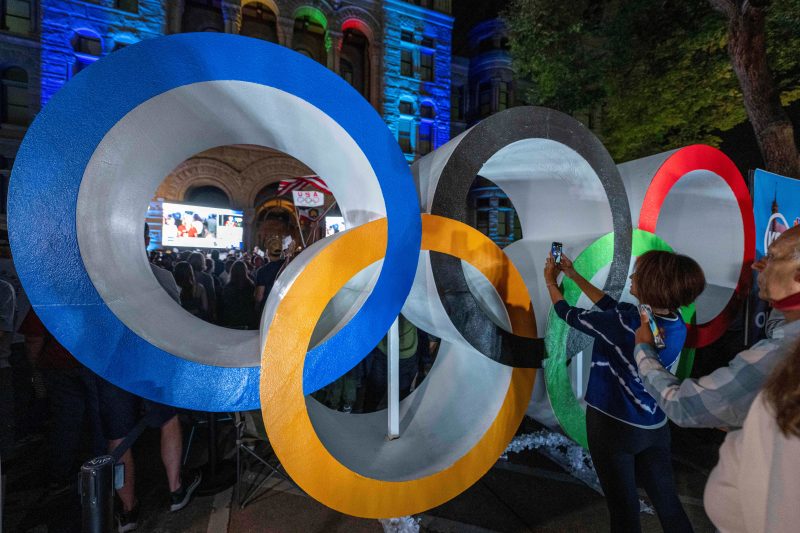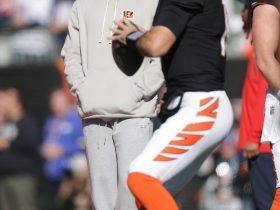- Utah will host the 2034 Winter Olympics, leveraging venues and infrastructure from the 2002 Games.
- Organizers plan to create a ‘family village’ to provide housing and support for athletes’ loved ones.
- All but one venue from the 2002 Salt Lake City Olympics are still in use and will be utilized again for the 2034 Games.
- A local youth sports program, started after 2002, has become somewhat of a feeder system for Team USA.
SALT LAKE CITY — For most Olympic hosts, it’s a mad scramble from the day the Games are awarded until the Opening Ceremony.
There are venues to construct. Or overhaul. Public transport to expand. An athlete’s village to build. Sponsors to woo. Tickets to sell. Volunteers to find.
Utah 2034 has almost none of those problems. It awarded the Winter Games nearly 10 years ahead of time, rather than the six or seven years most host cities get, and most of the prep work is already done, a legacy of the 2002 Winter Olympics.
Get Olympics updates in your texts! Join USA TODAY Sports’ WhatsApp Channel
So what do you do when you’re ready to throw the world’s biggest party and it is exactly 3,000 days away, as of Monday, Nov. 24? You announce your official name — Utah 2034 — and a merchandising partnership with Los Angeles 2028.
“There’s this interesting combination of pacing ourselves, because there’s certain things that if we start doing them early, we have to redo them. So we’re not doing them yet. But there’s also a lot of things we can do to perfect our Games delivery,” said Brad Wilson, CEO of the organizing committee for the 2034 Olympics and Paralympics.
“It is an award that’s about two to three years earlier than normal,” Wilson added. “So our big challenge is, how do we take advantage of that?”
By leaning into the same things that made Utah so appealing to the International Olympic Committee in the first place: Athletes and legacy.
Utah 2034 Olympics aim to build family village for athletes
As successful as the 2002 Games were, Utah 2034 organizers don’t want to simply cut and paste, especially with all but one venue are already in operation. So organizers are looking for ways to expand what worked nearly 25 years ago. Their signature idea is a family village. It will be located near the athlete village and offer housing, transportation, assistance with tickets and even translators for athletes’ loved ones.
“They asked me what I would like to change with the Olympic experience and the first thing I said was make it more accessible for the families,” said Lindsey Vonn, an Olympic champion in Alpine skiing and member of Utah 2034’s organizing committee.
Most athletes, Summer and Winter, do not secure a spot on the Olympic team until a month or so before the Games. That means their families are either booking flights and hotels in advance and hoping they don’t need to cancel, or they’re scrambling last minute to make travel arrangements and find tickets.
Either way, it’s an added stress athletes don’t need before the biggest event of their careers.
“My family is not small, and it’s always a challenge to get tickets and find accommodation and find transportation. It’s always been a problem,” Vonn said.
“Without the families, the athletes don’t exist,” she added. “I think one of our biggest selling points was the family village. It is special, and it should be that way in every single Olympics.”
It’s easy to see the family village be Utah 2034’s legacy, something that becomes a staple of the Olympic movement, much like the 2002 venues have become part of the fabric of Salt Lake City and the surrounding communities.
Salt Lake City 2002 Olympic venues are still in use
The IOC loves to talk about the legacy the Olympics leave in host cities, imagining the Games making a lasting impact on infrastructure, housing and sporting culture. Too often, however, it means white elephants and massive bills.
The sliding track in Turin closed within a few years of the 2006 Games. The Jeongseon Alpine Center was shuttered after the Pyeongchang Games in 2018. The speed skating arena in Sochi is now a convention center. Let’s not even start with Rio de Janeiro.
But Salt Lake City took that part of its duties as an Olympic host seriously. Every venue from 2002 is still in use today and, even with the growth of the Games, will be used again for Utah 2034. The only venue that will need to be constructed is for Big Air, and that will be temporary. (The curling venue also will be temporary, but will be located in the existing Salt Palace.)
Get our Chasing Gold Olympics newsletter in your inbox for cover of your favorite Team USA athletes
Some venues, like the Delta Center and Deer Valley ski resort, were and remain private and/or commercial properties. But the venues built specifically for the 2002 Games, like the Olympic Oval and Utah Olympic Park, have continued to operate, hosting elite-level competitions, school kids and community events.
“We have just viewed it as we should use these facilities for sport uses, public uses and community good,” said Colin Hilton, president and CEO of the Utah Olympic Legacy Foundation.
The foundation oversees the Olympic Oval, where speed skating was held; the Soldier Hollow Nordic Center, which hosted biathlon, cross country skiing and Nordic combined; and the Utah Olympic Park, which had the sliding sports and ski jumping.
“Today, we’re four times busier in the use of these legacy venues than right after 2002. That’s very rare in the world,” Hilton said. “We’ve been wearing down our venues, but we’ve also been repairing and maintaining them as we go and not waiting until they get into total disrepair.
“(It’s) what we call a living legacy of the ’02 Games.”
The other piece of that is who is using the venues.
How to make Winter Olympics sports more accessible for kids
The Youth Sports Alliance was created after 2002 to increase youth participation in winter sports, using the Olympic venues. Through Get Out & Play and ACTiV8, kids from elementary school through high school in Park City can try the various Olympic sports.
More than 3,200 kids participate each year, up from the 800 when it began. YSA offers scholarships and gear to lower-income families to make sure every child can participate in the after-school programs.
“In the winter, the school bell rings, they put their snow clothes on at school, private transportation comes, picks them up, takes them to the mountain where they get a lift ticket and a lesson, and then takes them back,” said Emily Fisher, executive director of YSA.
“You can try luge after school. That’s a program,” Fisher said. “It seems very normal in our community and I know it’s not, but it’s really fun to see all the different things kids try.”
YSA’s primary goal is to get kids outside and being active; Fisher pointed to a study by the National Recreation and Park Association that found kids spend just four to seven minutes a day outside in unstructured play.
But the program is also becoming something of a feeder system for Team USA. Three athletes on the U.S. team at the Beijing Olympics were “graduates” of Youth Sports Alliance programs: speed skater Casey Dawson, a bronze medalist in team pursuit; luger Ashley Farquharson; and Jared Shumate, who competed in Nordic combined.
That number could double at the Milan Cortina Games.
“Probably not, honestly,” Dawson said when asked if he’d have tried speed skating without YSA.
“I did cross country skiing. I did ski jumping — I crashed and never did it again,” Dawson said. “Speed skating just called me, and I’ve stuck with it ever since.”
With Utah 2034’s help and encouragement, the Youth Sports Alliance is expanding to Salt Lake City this year. Ultimately, Fisher hopes there will be programs throughout the state.
“What I love about the 2034 vision is it’s how can this be a lasting legacy? It’s not just 17 days of the Games, it’s not just about putting a Utah kid on the podium, but how can we change the whole state?” Fisher said. “That’s where they’re aiming, to get as many kids involved in Olympic sports as possible.”
Utah 2034 could have coasted for a year or two before getting to work in earnest, and the Games would not have suffered. But the work done now will make the Olympics and Paralympics better, and expand the legacy that makes Utahans so eager to host the Games — now and years in the future.
‘We’re going to be ready at the conclusion of the closing ceremonies of the Paralympics to start our process to try to get the Games in 2050,’ Wilson said. ‘Given the unique requirements that these venues have to have, and that culture of sport, that culture of developing youth and engaging youth, we think this is going to be one of our really unique superpowers.’






